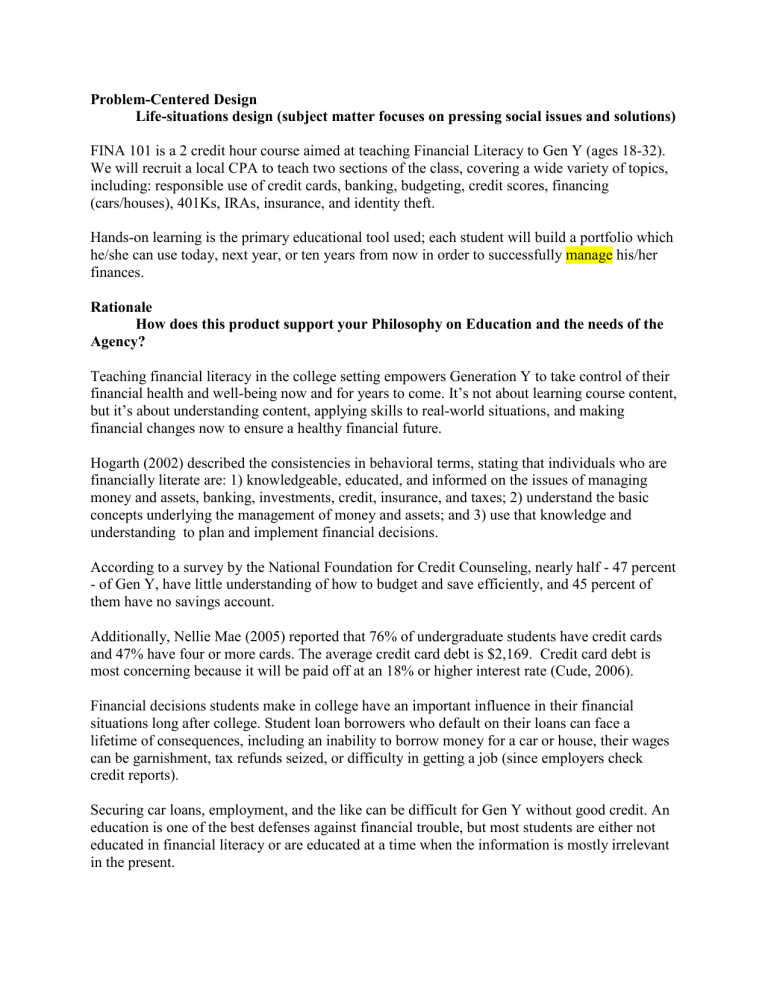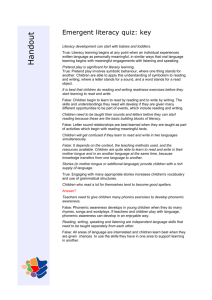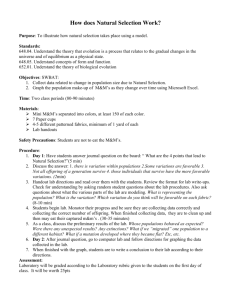CI701Financial Literacy Curriculum Project

Problem-Centered Design
Life-situations design (subject matter focuses on pressing social issues and solutions)
FINA 101 is a 2 credit hour course aimed at teaching Financial Literacy to Gen Y (ages 18-32).
We will recruit a local CPA to teach two sections of the class, covering a wide variety of topics, including: responsible use of credit cards, banking, budgeting, credit scores, financing
(cars/houses), 401Ks, IRAs, insurance, and identity theft.
Hands-on learning is the primary educational tool used; each student will build a portfolio which he/she can use today, next year, or ten years from now in order to successfully manage his/her finances.
Rationale
How does this product support your Philosophy on Education and the needs of the
Agency?
Teaching financial literacy in the college setting empowers Generation Y to take control of their financial health and well-being now and for years to come. It’s not about learning course content, but it’s about understanding content, applying skills to real-world situations, and making financial changes now to ensure a healthy financial future.
Hogarth (2002) described the consistencies in behavioral terms, stating that individuals who are financially literate are: 1) knowledgeable, educated, and informed on the issues of managing money and assets, banking, investments, credit, insurance, and taxes; 2) understand the basic concepts underlying the management of money and assets; and 3) use that knowledge and understanding to plan and implement financial decisions.
According to a survey by the National Foundation for Credit Counseling, nearly half - 47 percent
- of Gen Y, have little understanding of how to budget and save efficiently, and 45 percent of them have no savings account.
Additionally, Nellie Mae (2005) reported that 76% of undergraduate students have credit cards and 47% have four or more cards. The average credit card debt is $2,169. Credit card debt is most concerning because it will be paid off at an 18% or higher interest rate (Cude, 2006).
Financial decisions students make in college have an important influence in their financial situations long after college. Student loan borrowers who default on their loans can face a lifetime of consequences, including an inability to borrow money for a car or house, their wages can be garnishment, tax refunds seized, or difficulty in getting a job (since employers check credit reports).
Securing car loans, employment, and the like can be difficult for Gen Y without good credit. An education is one of the best defenses against financial trouble, but most students are either not educated in financial literacy or are educated at a time when the information is mostly irrelevant in the present.
In a recent study by the Eastern Family Economics and Resource Management Association, parents were found to be the most significant influence on students’ money management behaviors (Crude, 2006). These practical skills are rarely part of a college curriculum but need to be made a priority for several reasons. Financial literacy is more than just a part of the college curriculum, it is part of these students’ lives long after graduation.
“Colleges with excessive default rates, either exceeding 40 percent in the latest year, or 25 percent for three consecutive years, can lose their eligibility for federal student aid programs”
(Lewin, 2011).
Goals and Objectives
What will the recipients of your Curriculum Product know or understand after using it? What will they be able to do after using it?
Learning outcomes included:
The student will be able to examine, critique, and reflect on his/her personal knowledge, attitudes, perceptions, and behaviors as they relate to personal finance.
The student will be able to locate and explain a FICO credit report
The student will be able to design a plan to build his/her credit
The student will be able to illustrate what identity theft is and how he/she can protect his/her credit score.
The student will be able to research and evaluate credit card companies and estimate the cost of misusing credit cards.
The student will be able to differentiate between needs and wants and design and defend a personal budget.
The student will be able to examine and critique various loans and interest rates.
The student will be able to evaluate insurance, retirement, and employee benefit packages.
The student will be able to demonstrate and defend investment decisions.
We will follow up with the students who complete FINA 101 to learn whether they use the information learned and skills taught after the semester. We will gather information to learn how graduates of this course used the information taught after graduation: Do they consult their course portfolios whenever deciding whether to rent or buy property, lease or buy a car, and/or when deciding on retirement options?
Selection of Content
Significance (concepts, needs, interests):
In light of the housing mortgage crisis, skyrocketing credit card debt, and increasing student loan default rates, it is vital for colleges to offer curriculum in financial literacy.
Utility (usefulness):
Research shows that 70% of what students know about financial literacy comes from their parents. Obviously, most American’s are not financially savvy (reference earlier statistics) and cannot provide a solid foundation for their adult children. This course will be the most useful course a college student can take because it’s not about credit hours and a grade: it’s about learning to apply financial skills to lead a good life.
Validity (authentic)
This program was tested at the University of Charleston in the spring of 2012 with outstanding results, including:
Nearly 80% of survey respondents gained new or a significant amount of new financial knowledge through this course.
30% opened a savings account and 18% opened a checking account after taking FINA 101 this semester.
100% of survey respondents save more money now than before taking this course.
After taking FINA 101, one student reportedly is making plans for his major future expenses, like buying a car or house, based on his possible income. Another student has begun paying more than the minimum payment on her student loans.
Learnability (difficulty level)
Although the course is not easy per se, it can be understood and applied to students of all academic majors through practice and in building their financial literacy portfolio.
Feasibility (time constraints, funding, resources, expert instructors)
Since the course should be taught by an outside expert – a Certified Public Accountant or
Certified Financial Planner – some additional funding will be needed. In addition to adjunct pay for 2 credit hours per course, classroom space with computer access will be needed to conduct the course activities.
Organization of Content
Scope (ideas: breadth & depth of content)
The topics are covered with great breadth and most will be covered in depth as well. Topics such as FICO credit reports, building credit, managing credit cards, and building personal budgets will be taught in great detail. Topics such as loans and interest rates, insurance, retirement and
benefits, and investments will not be taught in as great detail due to the time constraints on the course.
Sequence (pre-req’s, simple to complex)
All course content will begin with the simple (needs v/s wants) and advance to the complex
(investments).
Integration (bringing together concepts, unified knowledge)
All topics will be unified through the creation of a personal financial portfolio.
Continuity (ideas, themes, & skills repeated)
All topics are intended to improve the financial literacy and ability of Generation Y students during and after college. It is a life skills class.
Community
What is the influence on the community?
If all Generation Y (ages 18-32) college students took this course and applied the information taught, our society would be altered significantly. People would set goals and save for those purchases (computers, vacations, cars, homes) instead of living off of borrowed funds. Default rates on federal financial aid would decrease, freeing up more money for others to attend college or university. We would all be better off if each member of society took responsibility for his/her credit instead of believing he/she “deserves” purchases (private education, vehicles, jewelry).
Assessment
How are the recipients of your curriculum assessed?
Students will be assessed on whether or not they can successfully create a budget, investment portfolio, retirement plan, etc. Additionally, reflective writing will be utilized to measure and assess intended outcomes.
Follow-up assessment includes an anonymous 10 question survey near the end of the semester and an additional survey one year after completion of the course to discover whether or not students are using the information they were taught.
Change
What is the process for Reflection/Revision?
Survey data from the end of the semester and one year out will be collected and analyzed to determine which topics to increase/decrease depth, which topics should be added, and the like.






